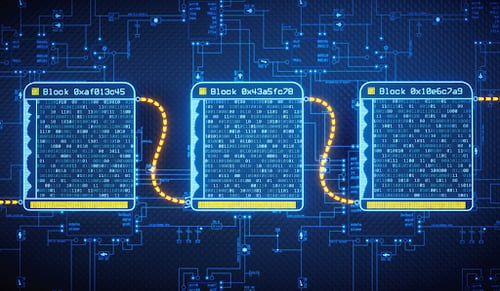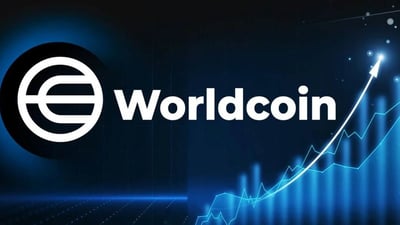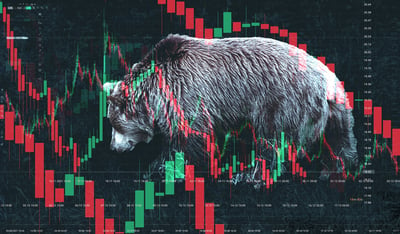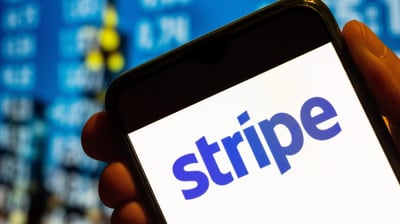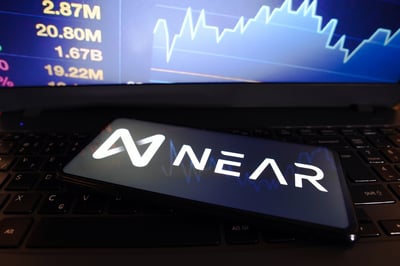Tokenization has won over a lot of fans, who believe it will be a revolutionary innovation in numerous financial markets. By bringing blockchain technology to traditional assets and converting them into digital tokens, those assets can be traded more easily, with greater efficiency and lower costs.
Digital tokens that live on the blockchain can represent almost any kind of asset, ranging from stocks and shares to commodities, art, collectibles, real estate, bottles of wine, tickets to events and just about anything else. The technology is poised to transform financial markets, with benefits including instant transaction finality and less opportunity for fraudulent transactions.
Support for tokenization has emerged from unlikely quarters, with one of the technology’s most vocal new proponents being none other than BlackRock CEO Larry Fink, whose company recently became the first in the world to obtain approval for a Bitcoin Exchange Traded Fund (ETF).
In an interview with CNBC, Fink said the Bitcoin ETF will be the prelude to a technological revolution of financial assets that are centered on tokenization. He explained that tokenization will bring unprecedented visibility to financial markets because each asset will be represented by a token and each investor will have a tokenized identity. As such, every transaction involving a financial asset will be recorded on a transparent general ledger that anyone can see, eliminating issues around corruption and money laundering, he said.
Another key benefit is instantaneous settlement, as Fink explained: “Think about all of the costs around settlements of bonds and stocks. With tokenization, every transaction will be immediate, with no intermediary needed. So we believe this is a positive technological transformation for financial assets.”
With a growing list of enthusiastic supporters like Fink, it’s clear that tokenization has a very promising future. And although we can’t be sure which markets tokenization will have the biggest impact on, we can identify some likely candidates, based on the fact that it’s already making inroads in these markets:
Real estate
As mentioned, real estate is without doubt one of the most promising use cases for tokenization. By splitting a rental property, hotel, factory or some other building into tokens, it means that investors will be able to acquire a share of that building at a far lower price.
In the case of rental properties, the individual tokens can also be programmed using smart contracts, so that the rent paid is split proportionally between each token holder when it’s paid. As such, real estate suddenly becomes an extremely viable investment and passive income-generating opportunity for almost anyone who wants to get involved.
One of the benefits of tokenization is that smart contracts can also be used to enforce rules that ensure compliance with asset issuing, distribution and transfer processes.
The Slovenian startup Blocksquare has emerged as a clear leader in this respect. In addition to its standard corporate resolution, which is a legally binding contract that details how tokenization works with respect to each property, it has also created a clever loan mechanism using smart contracts. The idea is to make it virtually impossible for either the title holder or individual investors, to try and cheat other stakeholders.
When tokenizing a property with Blocksquare’s platform, the title holder of the real estate in question is required to become a borrower. They’ll be issued with an amount of BSPT tokens that are equivalent to the value of the property, and a mortgage will be levied on the property. It’s a complex but entirely automated process that ensures the title holder cannot legally transact with the tokenized real estate, in order to protect investors. BSPT is the native token of Blocksquare and will be listed on the Bitmart exchange platform from January 24, 2024.
Blocksquare has already completed the notary process once in its home country, tokenizing a parking space in the capital Ljubljana as a proof of concept. Ownership of that single parking space was transferred to a company called NDP, which then took out the loan agreement that tied the real estate down as collateral. The transaction was then authenticated and certified via the Slovenian Land Registry, meaning it is both legally binding and enforceable.
Customer loyalty
A more intriguing prospect for tokenization is the age-old customer loyalty program. By giving customers digital tokens in return for buying their products, brands can extend the value of their loyalty programs by increasing the redemption opportunities.
With traditional loyalty programs, rewards points have always had very limited utility, and can only be exchanged for discounts on the same brand’s products. With blockchain, tokenized rewards become far more flexible, with companies able to offer an array of experiences and also team up with other brands to expand the range of products they can be redeemed for. In this way, brands can provide more unique and personalized rewards for each customer, and even combine their loyalty programs with those of other brands.
The alcoholic beverage company ATH Vodka is an early mover in the tokenization of customer loyalty programs. It worked with the tokenization platform Tidepay to create a new rewards app, called ATH Rewards, to deliver more memorable experiences to its customers as a way of showing its appreciation for their loyalty.
Using Tidepay’s platform and tools, ATH Vodka created $ATH tokens that are paid to each customer whenever they buy a bottle of spirits. These tokens are held in the user’s wallet within the app, and can be redeemed for many kinds of products, swapped for another cryptocurrency like Bitcoin, or transferred to someone else.
Customers can save their $ATH tokens and use them to buy various discounted products offered through the app, including those from ATH Vodka and also from third parties. They can also save their tokens to access other benefits, such as sports events, concerts and other in-person experiences. It’s a much more appealing prospect that showcases the incredible flexibility of tokenization.
Precious metals
For centuries, gold has been one of the world’s favourite stores of value and investment vehicles. However, despite its status, it can be a very difficult asset to invest in. Not only is gold expensive, but there are major complications when it comes to storing and transporting it, which makes buying and selling large amounts a lengthy and difficult process.
In addition, precious metals can sometimes have a high barrier to entry with minimum investment requisites. International regulations also stipulate the traceability of many precious metals, all the way from production to the end customer, covering the full supply chain.
The tokenization of precious metals enables fractionalized ownership of these assets, removing the barrier to entry and empowering smaller players to access the market. This will likely increase participation, bringing improved liquidity. In addition, it also eliminates the problems around transportation and storage. The precious metal itself can remain safely stored in a vault somewhere, and the token holder never needs to actually touch it, meaning transactions become far more efficient.
A number of crypto projects have already made strong inroads in the tokenization of precious metals. One of the best-known is PAX Gold, which is a cryptocurrency token created by Paxos that’s pegged to the price of physical gold and backed 1:1 by deposits stored in the company’s vaults. One PAXG token is the equivalent of one fine troy ounce of gold and provides investors with a cost-effective, secure and regulated way to access investment-grade physical gold without actually having to take ownership of it.
Fine art
Imagine a world where it’s possible to buy a stake in a renowned masterpiece such as the Mona Lisa for a few hundred dollars. Until tokenization, that would never have been possible, but thanks to blockchain it has become a realistic prospect.
Tokenization of art refers to representing a physical artwork as thousands of digital tokens, with each one representing a small share of that artwork. When art is tokenized, it can effectively be split into thousands of tiny pieces, without ripping the actual world of art into bits. Each of those pieces can then be owned by different individuals who are intrigued by the possibility of investing in fine art.
Fine art has traditionally been one of the most exclusive markets of all, with genuine masterpiece works of art costing tens of thousands of dollars. Worse, even if you have the money to buy such a work of art, it’s not easy to do so as you also need connections with privileged art dealers and galleries.
Besides boosting liquidity and accessibility, tokenization also enables artists to embed royalties into smart contracts so that they can receive a share every time the artwork in question changes hands. This ensures artists will always receive a fair share of any resales of their art, and can be especially useful for up-and-coming artists who may sell an artwork cheaply, only for its value to grow exponentially in later years. Tokenized art investment opportunities are currently available through ArtFi, which is a DAO-led organization that buys physical works of art and displays them in its own museum in Dubai, before splitting them into 10,000 tokens. Those tokens are then offered to customers as an investment opportunity.
 Hassan Maishera
Hassan Maishera
